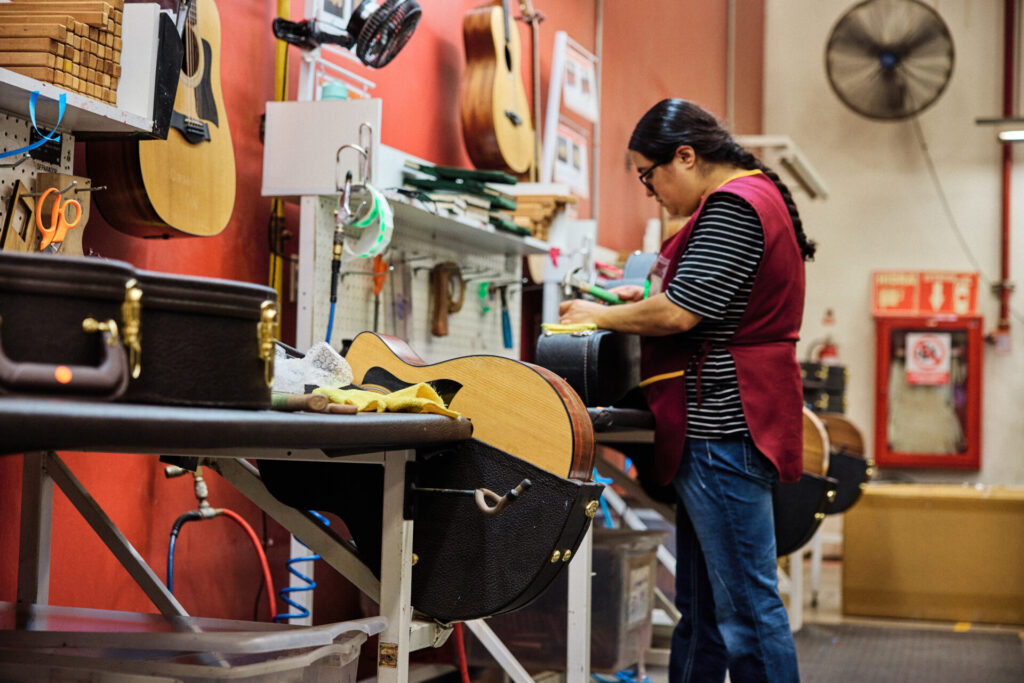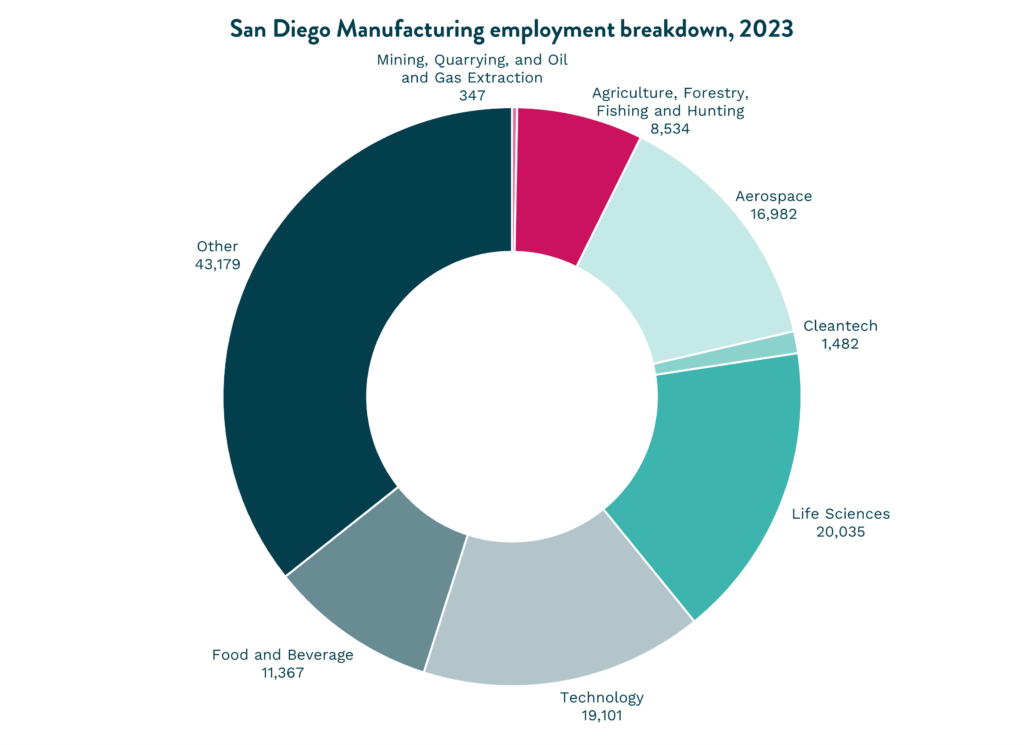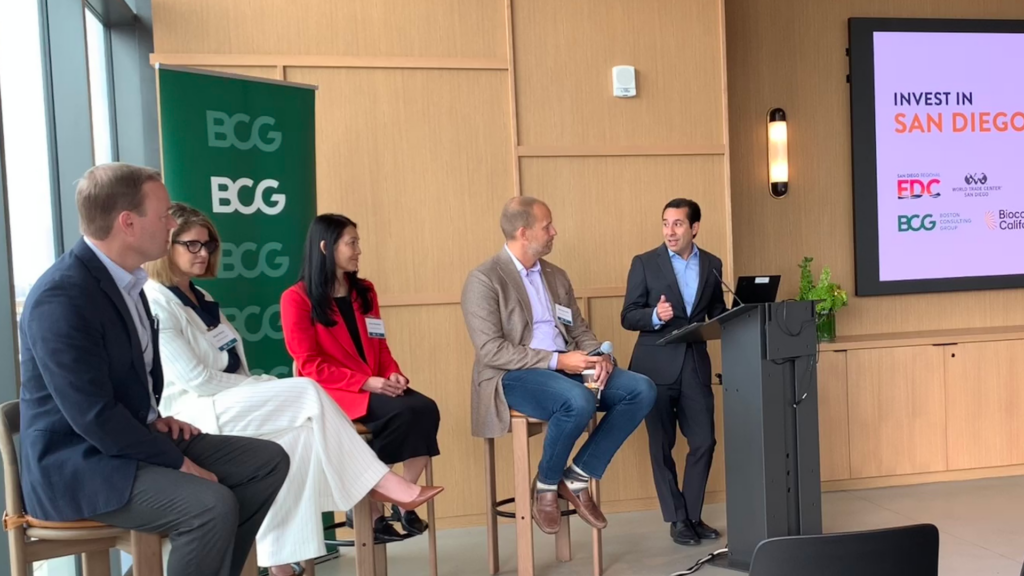WORLD TRADE CENTER SAN DIEGO CONVENES REGIONAL LEADERS TO HELP SAN DIEGO BUSINESSES EXPAND GLOBALLY, CREATE LOCAL JOBS
In order to foster vital global economic partnerships, Congressman Scott Peters, San Diego Mayor Todd Gloria, and World Trade Center San Diego (WTCSD), the international team at San Diego Regional Economic Development Corporation (EDC), are leading a 2025 trade delegation to France. During the September 21–September 26 trade mission, business and civic leaders will promote the region’s key industries and seek to establish and strengthen business relationships across biotechnology, clean energy, maritime technologies, and tourism.
As geopolitical tensions, trade policy uncertainty, and supply chain realignments reshape the global economy, it is more important than ever for San Diego companies and institutions to strengthen ties with trusted partners in Europe. France—home to leading firms in aerospace, life sciences, clean energy, and advanced manufacturing—offers natural synergies with San Diego’s innovation-driven economy. This trade mission aims to open new pathways for collaboration, investment, and market access that will help San Diego businesses remain competitive and resilient in a complex international landscape.
“With years of enduring collaboration between France and the U.S., now is the time to reinforce our regional commitments on the world stage,” said Congressman Scott Peters. “I am eager to join WTCSD on the road—now for the fifth time—to strengthen our global collaboration, drive investments in innovation and R&D, and bolster public-private partnerships across critical industries.”
San Diego and France have shared expertise in knowledge-intensive industries, including biotechnology, aerospace and defense, and clean energy. France is San Diego’s third largest foreign investor, contributing $5.6 billion since 2014. Further, the country’s research institutions have built long-lasting relationships with San Diego’s premier universities including San Diego State University and UC San Diego. France is ranked third in Europe for R&D spending, with the Paris region ranking first worldwide for FDI in R&D and corporate projects.
Companies have also capitalized on these synchronicities. On the heels of its acquisition of San Diego-based Inhibrx, France’s largest life sciences company Sanofi announced its commitment to invest at least $20 billion in the U.S. by 2030. French aerospace giant Safran also calls San Diego home, with aerospace jobs making up nearly one-fifth of the region’s innovation employment.
Boasting one of the cleanest energy grids in Europe and producing more than half of the European Union’s nuclear energy, France is also home to the ITER fusion energy project—the largest international scientific collaboration in the world. As the project aims to create fusion energy at power plant scale, San Diego-based General Atomics is one of its largest contributors, fabricating the world’s most powerful pulsed superconducting electromagnet for ITER.
“San Diego is an undeniable force in the global marketplace, and our future prosperity depends on strengthening those ties,” said Mayor Todd Gloria. “From pandas returning to the Zoo to nonstop flights to Amsterdam to new tech jobs here at home, global engagement is delivering real results for San Diegans. I’m proud to continue this work alongside World Trade Center San Diego and Congressman Scott Peters, and to celebrate our new Sister City partnership with Marseille“
Over the five-day trade mission in Paris, Marseille, and Saint-Paul-lès-Durance, San Diego will look to build lasting institutional relationships and attract foreign investment in industries critical to the future.
Agenda items include:
- The celebration of key partnerships including a new San Diego-Marseille Sister City Agreement; an MOU between life sciences trade organizations Eurobiomed and Biocom; and agreements for France’s Centre National de la Recherche Scientifique to place leading researchers at San Diego State University and UC San Diego.
- Opportunities to showcase San Diego’s innovation economy and major regional development projects to foreign investors.
- Ahead of the 2028 Los Angeles Olympics, tours and meetings with the organizers of the Paris Olympics for a best-practices discussion on infrastructure, tourism, and economic development.
- Meeting and tour of ITER, where General Atomics’ recently-completed central solenoid magnet will be housed—a significant accomplishment for San Diego and clean energy innovation.
- Formal meetings with major entities with investment interests in both countries, including Sanofi, LVMH Group, Dentons, and the Port of Marseille.
“As the rules of global commerce continue to shift rapidly, San Diego firms of all sizes need strong partnerships to navigate this moment,” said Nikia Clarke, executive director of World Trade Center San Diego and chief strategy officer at San Diego Regional EDC. “That’s why we lead trade missions as a region—with a diverse cross-sector delegation of both the region’s largest and smallest employers working together to find opportunity in uncertainty.”
Delegates will participate in upwards of 15 meetings over the course of the trade mission, sharing best practices and driving business connectivity across many verticals. The nearly three dozen San Diego delegates include representatives from ASML, Ambix Ventures, Cubic Transportation Systems, General Atomics, San Diego Zoo Wildlife Alliance, and smaller businesses including French Bio Beach, GEN2X, and La Jolla Labs. Also in attendance are delegates from key agencies, academic institutions, and civic organizations such as the Port of San Diego, San Diego Regional Chamber of Commerce, SoCal French American Chamber of Commerce, San Diego Tourism Authority, Biocom, San Diego State University, University of California Office of the President, UC San Diego, and others
The trade mission is organized by World Trade Center San Diego, the international team at EDC, with assistance and support provided by the U.S. Embassy in France, the SoCal French-American Chamber of Commerce, and Dentons Paris, and sponsorship by Qualcomm, Ambix Ventures, General Atomics, and San Diego Tourism Authority.
Learn more about France and San Diego’s connection here, and follow along during the trade mission: #SDinFR.
WTCSD has previously led trade missions to Singapore, South Korea, The Netherlands, Germany, the United Kingdom, Japan, Vancouver, and more.
About World Trade Center San Diego
World Trade Center San Diego (WTCSD) is the international team within San Diego Regional Economic Development Corporation (EDC). WTCSD works to further San Diego’s global competitiveness by building an export pipeline, attracting and retaining foreign investment, and increasing San Diego’s global profile abroad. WTCSD.org
For media queries or other questions, contact:

Bree Burris
Sr. Director, Communications & Community Engagement











